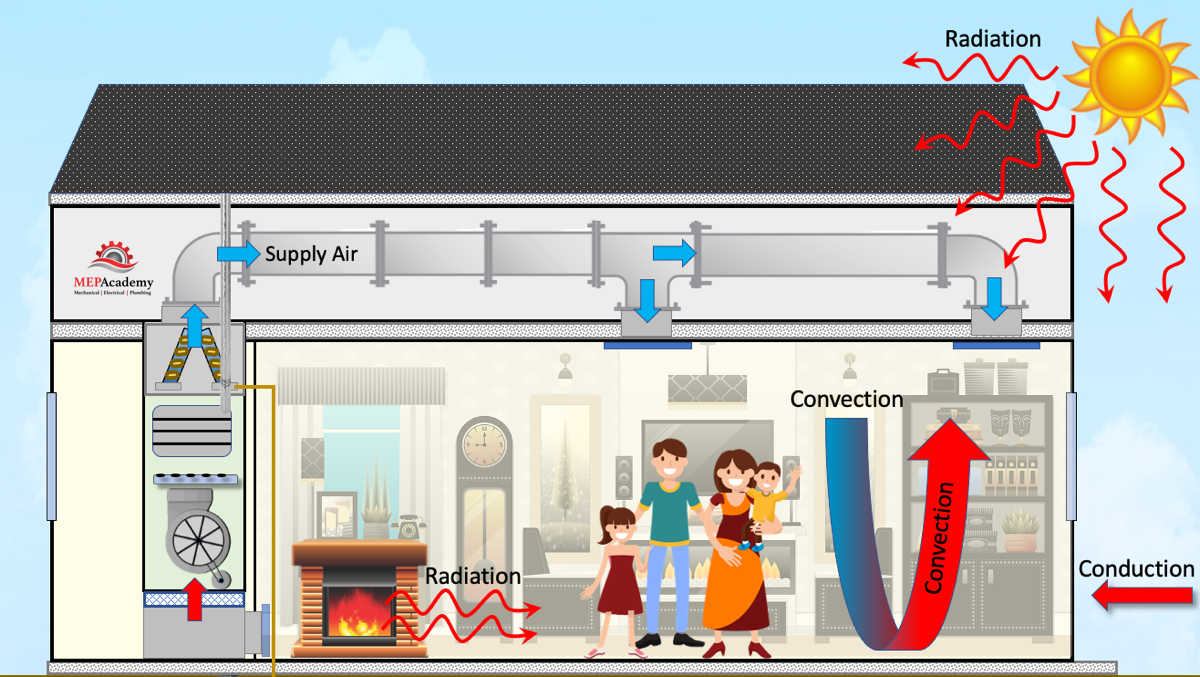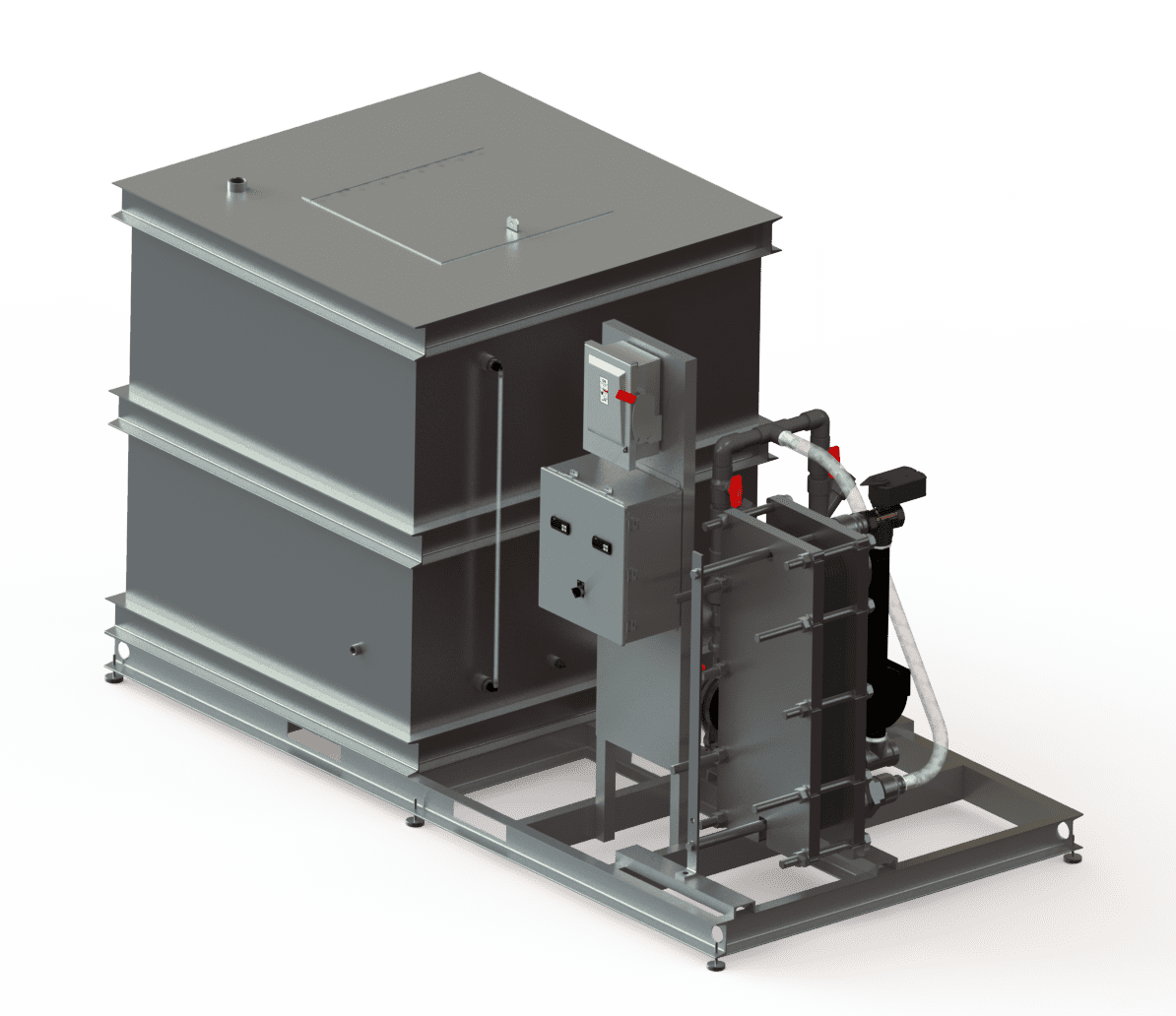Behind the Scenes of Advanced CFD Modeling in DVS Heat Transfer Systems
Wiki Article
Advancements in Heat Transfer Equipments: What You Need to Know for Optimal Efficiency
Advancements in Heat transfer systems are transforming performance throughout numerous sectors. Advanced products like graphene and nanofluids assure considerable renovations in thermal conductivity. The assimilation of IoT and device discovering offers opportunities for real-time monitoring and enhanced power effectiveness. Nonetheless, the landscape of thermal monitoring is swiftly advancing (DVS Heat Transfer Systems). Recognizing these advancements is necessary for achieving optimal system efficiency and sustainability in the future. What certain developments are forming this improvement?Emerging Materials for Improved Heat Transfer

Advanced Heat Exchanger Designs
While conventional Heat exchangers have served their purpose in numerous applications, progressed styles are currently emerging to meet the enhancing demands for performance and performance. These ingenious layouts, such as plate, shell-and-tube, and finned-tube Heat exchangers, integrate boosted area and improved circulation patterns to boost thermal transfer prices. On top of that, compact styles enable reduced area demands without compromising efficiency. Advanced products, such as compounds and corrosion-resistant alloys, furthermore boost resilience and performance under extreme problems. Additionally, simulation innovations and computational liquid characteristics are significantly used to improve these designs, ensuring peak Heat transfer characteristics. As industries look for to minimize energy consumption and maximize result, the fostering of advanced Heat exchanger designs is critical in achieving these goals.The Duty of Nanotechnology in Heat Transfer
Nanotechnology plays a necessary duty in improving thermal conductivity within Heat transfer systems. By controling products at the nanoscale, scientists have achieved considerable enhancements in energy performance. These developments not only optimize efficiency yet also add to even more sustainable power remedies.Enhanced Thermal Conductivity
Significant innovations in thermal conductivity have arised with the application of nanotechnology, revolutionizing Heat transfer systems across various industries. By incorporating nanoparticles right into Heat transfer liquids and materials, researchers have attained impressive boosts in thermal conductivity. These nanoparticles, such as carbon nanotubes, graphene, and metal oxides, improve the Heat transfer residential properties due to their high area and unique thermal attributes. The resulting compounds display improved efficiency in applications varying from electronics cooling systems to sustainable energy technologies. In addition, the capacity to tailor the size, shape, and composition of nanoparticles enables optimized thermal monitoring remedies. As an outcome, nanotechnology continues to play an essential function in the growth of a lot more effective and effective Heat transfer systems, leading the way for boosted industrial applications.
Energy Efficiency Improvements

Integration of IoT in Heat Transfer Solutions
The combination of IoT in Heat transfer systems presents the implementation of smart sensors that improve operational effectiveness. These sensing units allow real-time information surveillance, allowing for immediate adjustments and optimizations. This technical innovation has the possible to considerably boost efficiency and power management in Heat transfer applications.Smart Sensors Application
As Heat transfer systems evolve, the assimilation of wise sensors via the Web of Points (IoT) has actually become a transformative technique. These sensors make it possible for real-time surveillance of temperature, circulation, and stress rates, improving system performance and reliability. By accumulating and transferring information, they assist in positive upkeep, decreasing the danger of system failures. In addition, wise sensing units add to energy financial savings by refining functional specifications based on environmental conditions. Their ability to analyze fads and abnormalities enables informed decision-making, guaranteeing peak efficiency of Heat transfer systems. As sectors significantly adopt this modern technology, the application of smart sensors stands to transform just how Heat transfer systems are handled, paving the way for greater sustainability and enhanced efficiency outcomes.Real-Time Data Surveillance
Exactly how can real-time information keeping an eye on enhance the effectiveness of Heat transfer systems? By incorporating Net of Points (IoT) technology, Heat transfer systems can utilize continual information collection from wise sensing units. This real-time tracking allows for prompt analysis of flow, stress, and temperature prices, allowing drivers to identify inefficiencies promptly. Changes can be made to optimize efficiency, reduce energy usage, and extend equipment life expectancy. Furthermore, anticipating upkeep can be implemented, lessening unanticipated downtime and pricey repair work. The capacity to imagine efficiency metrics through control panels improves decision-making, promoting a positive approach to system administration. Eventually, real-time data monitoring not only improves operational performance but additionally contributes to sustainability goals within industrial processes.Energy Efficiency and Sustainability Trends
Energy performance and sustainability fads are reshaping the landscape of Heat transfer systems, driving innovation and compliance throughout various markets. Organizations are increasingly prioritizing energy-efficient layouts to minimize operational costs and minimize environmental impacts. The assimilation of renewable resource resources is becoming more prevalent, allowing Heat transfer systems to run sustainably while satisfying regulatory needs. In addition, advancements in materials and technologies advertise reduced energy usage and boost general performance. Lifecycle evaluations are also gaining traction, enabling business to review the environmental impact of Heat transfer systems from production to disposal. This concentrate on sustainability not only sustains company duty but additionally positions organizations competitively in a market where customers significantly favor green solutions. Power efficiency and sustainability stay essential factors to consider for future developments in Heat transfer modern technology.Innovations in Thermal Management Solutions
While the need for effective Heat transfer continues to rise, advancements in thermal monitoring services are emerging to deal with both performance and sustainability obstacles. Advanced materials, such as phase modification products and nanofluids, are being established to improve Heat transfer effectiveness - DVS Heat Transfer Systems. These products enhance thermal conductivity and DVS Heat Transfer Systems enable far better temperature regulation in different applications. Furthermore, innovations like energetic thermal control systems are gaining grip, allowing real-time adjustments to manage Heat flow properly. These systems contribute to energy savings and minimize the ecological impact of thermal processes. Furthermore, the assimilation of IoT in thermal management promotes tracking and anticipating maintenance, ensuring optimized efficiency and long life of Heat transfer systems. In general, these innovations stand for considerable strides towards even more sustainable thermal monitoring methodsFuture Instructions in Heat Transfer Innovation
Emerging developments in thermal management solutions indicate a promising future for Heat transfer modern technology. Scientists are increasingly concentrating on developing materials with exceptional thermal conductivity and boosted energy performance. Developments such as nanofluids, which include put on hold nanoparticles, supply substantial improvements in Heat transfer performance. Furthermore, the combination of wise products that adjust to differing temperature problems is obtaining traction, enabling for more receptive and reliable systems. The rise of additive manufacturing methods is also enabling the layout of complex Heat exchanger geometries that enhance fluid flow. The application of machine discovering formulas is anticipated to reinvent the optimization of Heat transfer systems, facilitating anticipating maintenance and performance enhancement. Jointly, these advancements are positioned to change the landscape of Heat transfer modern technologies in different sectors.
Often Asked Concerns

Just how Do I Select the Right Heat Transfer System for My Application?
Choosing the best Heat transfer system entails assessing application requirements, including temperature level arrays, liquid properties, and efficiency demands. Assessing system types, upkeep factors to consider, and cost-effectiveness likewise plays a necessary duty in making an educated decision.What Are the Maintenance Demands for Advanced Heat Exchangers?
Upkeep demands for innovative Heat exchangers usually include routine evaluations, keeping an eye on for leaks, cleansing of surfaces, and guaranteeing ideal circulation prices. Abiding by maker guidelines assurances reliable operation and prolongs the equipment's life expectancy.
Just How Do Environmental Elements Affect Heat Transfer Efficiency?
Ecological variables considerably affect Heat transfer performance. Variants in temperature level, moisture, and air flow influence thermal conductivity and convective Heat transfer, inevitably impacting system efficiency and demanding factor to consider throughout the layout and procedure of Heat transfer systems.What Safety And Security Requirements Apply to Heat Transfer Systems?
Safety criteria for Heat transfer systems generally consist of guidelines from companies such as ASME and ASTM. DVS Heat Transfer Systems. These standards address products, style, and functional practices to ensure dependability, performance, and protection versus threats in numerous applications
How Can I Troubleshoot Typical Heat Transfer System Issues?
Repairing typical Heat transfer system problems involves looking for leakages, ensuring proper liquid flow, examining insulation stability, and verifying temperature differentials. Recognizing these variables can aid keep system performance and stop more difficulties.Nanotechnology plays a necessary role in boosting thermal conductivity within Heat transfer systems. Significant improvements in thermal conductivity have actually emerged through the application of nanotechnology, reinventing Heat transfer systems across various sectors. Innovations in thermal conductivity with nanotechnology have paved the method for exceptional renovations in energy efficiency within Heat transfer systems. Power efficiency and sustainability trends are improving the landscape of Heat transfer systems, driving development and compliance across numerous sectors. The assimilation of IoT in thermal monitoring facilitates monitoring and predictive maintenance, making certain maximized efficiency and longevity of Heat transfer systems.
Report this wiki page